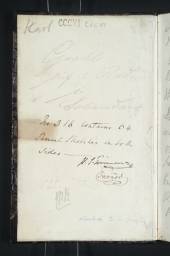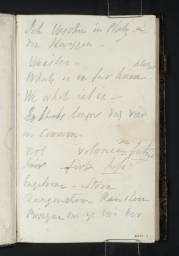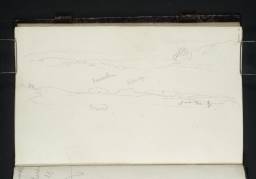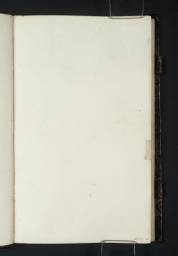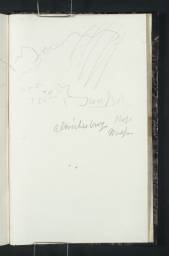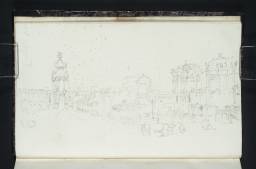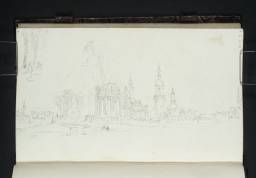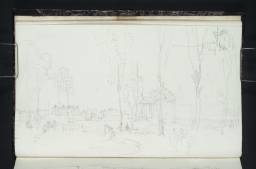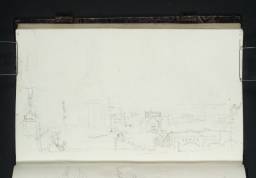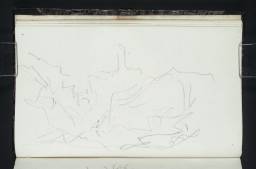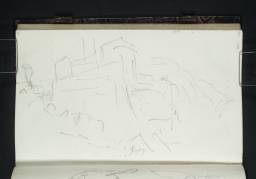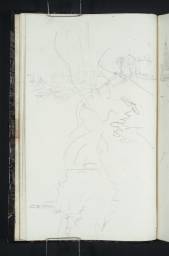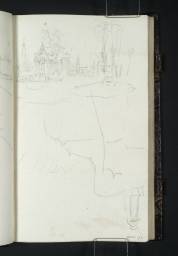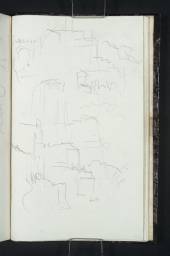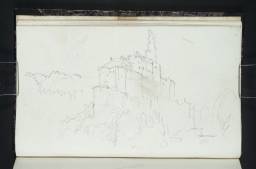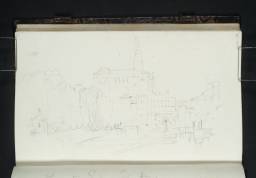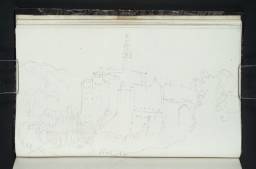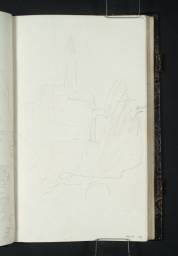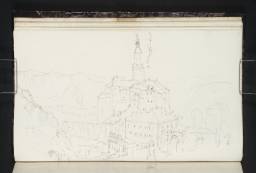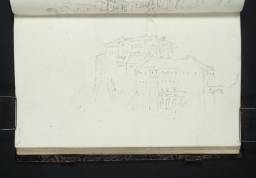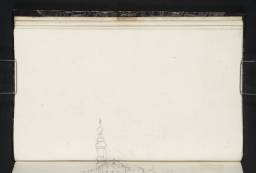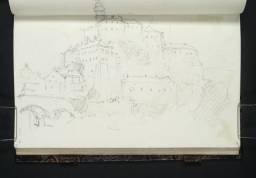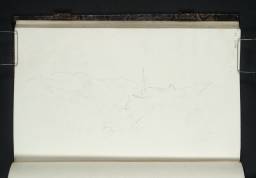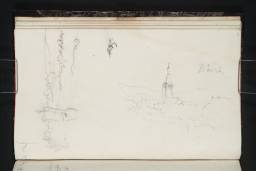CCCVI 1–68a
Sketchbook quarter-bound in boards covered with violet and navy marbled paper, with embossed navy leather; the same leather used for spine, vertical edging on front and back covers, and three loops for holding pencils or fastening (one attached to centre of inside front cover, the others attached to top and bottom of inside back cover)
Signed by H.S. Trimmer and Charles Turner in black ink and inscribed ‘No 316 Contains 64 | Pencil Sketches on both | sides –’ at centre of front cover pastedown
Signed in pencil by Charles Locke Eastlake ‘C.L.E.’ and John Prescott Knight ‘JPK’ towards bottom left of front cover pastedown
Blind-stamped with Turner Bequest monogram at centre towards rear of front cover pastedown
Stamped in black ‘CCCVI’ top centre of front cover pastedown and top right of back cover pastedown
Inscribed in pencil ‘CCCVI’ top centre of front cover pastedown
68 leaves of off-white wove paper
Unwatermarked
Approximate size of page 170 x 104 mm
Signed by H.S. Trimmer and Charles Turner in black ink and inscribed ‘No 316 Contains 64 | Pencil Sketches on both | sides –’ at centre of front cover pastedown
Signed in pencil by Charles Locke Eastlake ‘C.L.E.’ and John Prescott Knight ‘JPK’ towards bottom left of front cover pastedown
Blind-stamped with Turner Bequest monogram at centre towards rear of front cover pastedown
Stamped in black ‘CCCVI’ top centre of front cover pastedown and top right of back cover pastedown
Inscribed in pencil ‘CCCVI’ top centre of front cover pastedown
68 leaves of off-white wove paper
Unwatermarked
Approximate size of page 170 x 104 mm
Accepted by the nation as part of the Turner Bequest 1856
Exhibition history
References
Turner used this sketchbook, the third of the 1835 tour, during his visit to Dresden and Saxon Switzerland. He likely purchased it in Dresden, to record that city but principally to document a short tour of the Elbe Mountains situated to the southeast of it. Named after the Swiss Jura, the Elbe Mountains cross the Czech border becoming known as ‘Bohemian Switzerland’. On this occasion Turner made the Saxon range the object of his attentions. He focussed on the Lilienstein, Pfaffenstein and Königstein rocks, the latter of which is dominated by a huge fortress, and the Bastei, a group of jagged pinnacles towering over six hundred feet above sea level. The Bastei was hugely popular amongst tourists and artists in Turner’s day; visitors could move across the precipitous pinnacles by way of a bridge, taking in expansive views across the Elbe valley. From Saxon Switzerland Turner made his way back to Dresden, passing through Bad Schandau, the Schrammsteine rocks and Pirna. Soon after arriving at Dresden Turner started a new sketchbook, the Dresden, Teplitz and Prague (Turner Bequest CCCI), which he used on his journey back towards Bohemia.
How to cite
Alice Rylance-Watson, ‘Dresden and Saxon Switzerland sketchbook 1835’, sketchbook, September 2016, in David Blayney Brown (ed.), J.M.W. Turner: Sketchbooks, Drawings and Watercolours, Tate Research Publication, August 2017, https://www

